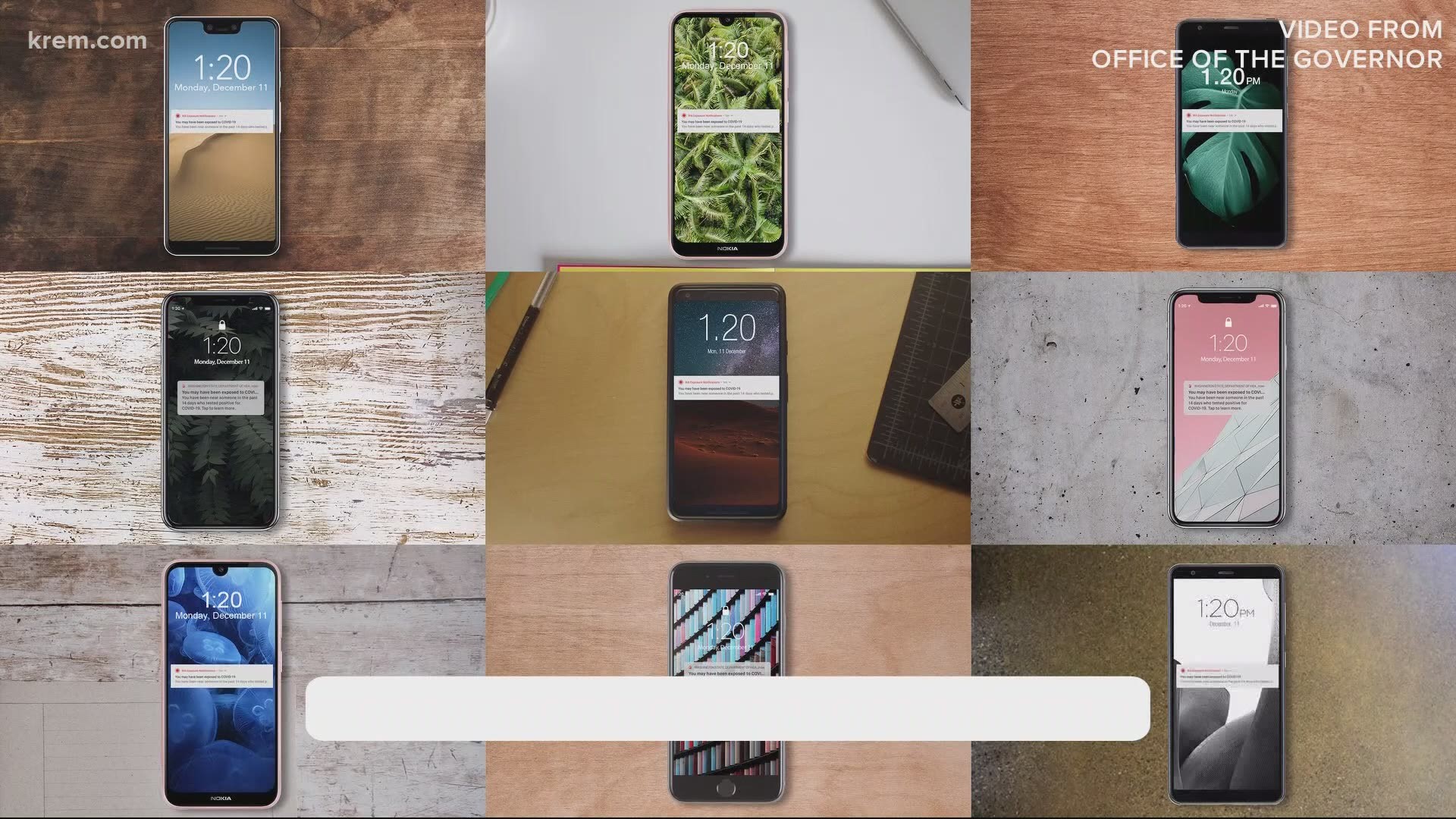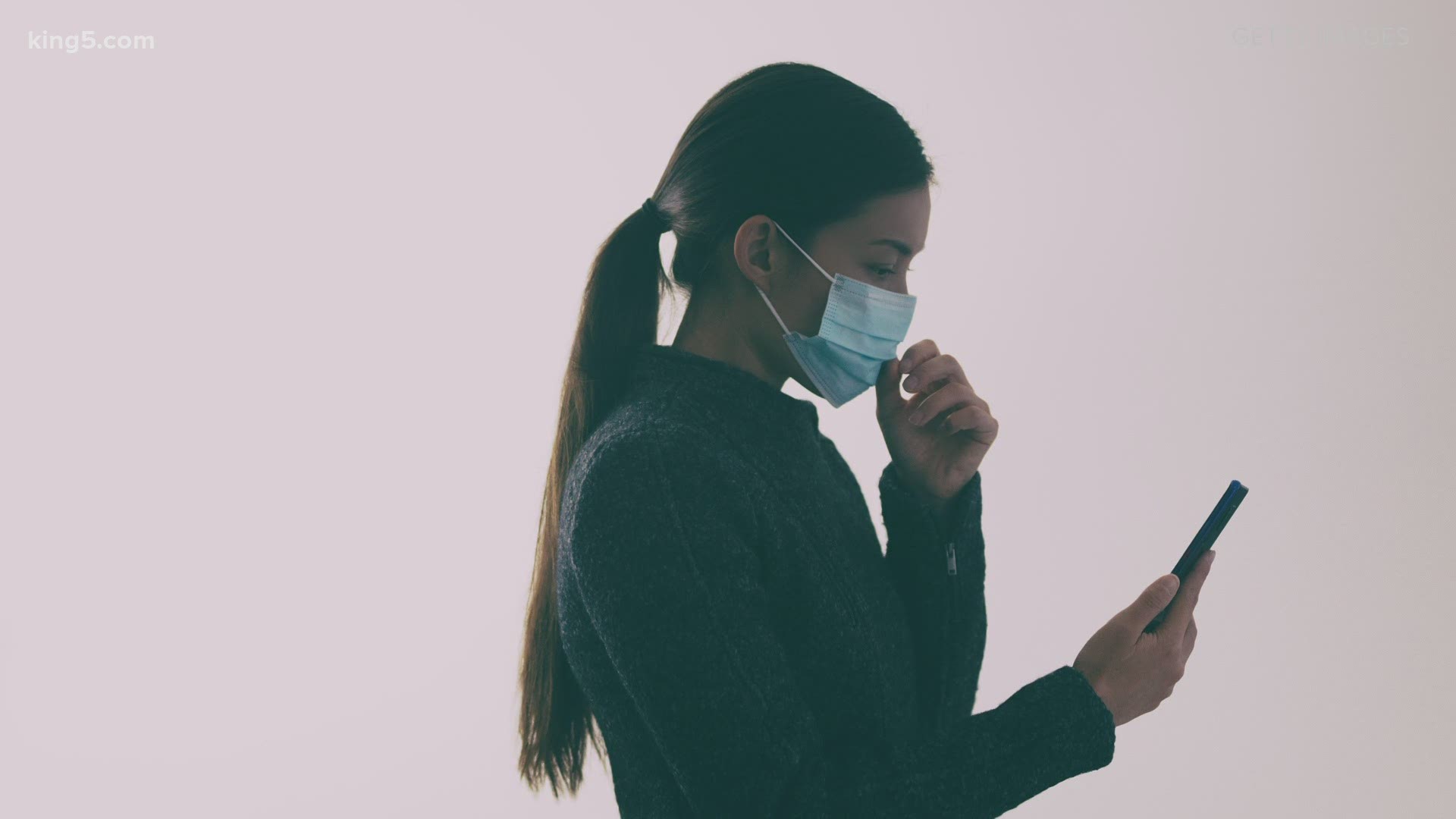SPOKANE, Wash — The Washington Department of Health and Governor Jay Inslee unveiled new technology on Monday that can help alert users when they've come in contact with someone who's tested positive for the coronavirus.
Inslee repeatedly assured Washingtonians during a press conference that the smartphone tool, which is opt-in, does not record, much less share, personal or location data.
Here's how it works.
- For Android users, go to the Google Play store and download the "WA Notify" app. Select your state and agree to the terms. For iPhone users, go to Settings and select "Exposure Notifications." Again, select your state and agree to the terms. Once enabled, the app will work in the background; it does not need to be opened again.
- Basically, the app randomly generates a secret ID number for your phone.
- When your phone gets within Bluetooth range of another activated phone, the two share ID numbers with each other.
- Your phone will secretly log that number and hang onto it for two weeks. The only other data it records is how close your phone was to theirs, and for how long. It doesn't know who they are or where the contact took place. Even that little bit of data it records isn't something anyone can actually look at — not you, Apple, Google, or public health officials.
- Let's say someone you stood near at the grocery store comes down with symptoms later. They go and get tested and the test comes back positive for COVID-19. The public health office can then give them a special code, which the sick person enters into their app.
- Now their secret ID number basically becomes flagged. Your app will scan its log of IDs and realize it has the sick person's ID code on it, meaning you were recently within Bluetooth range of someone with COVID.
- Then, it'll check to see if you were close enough to them for long enough that you should be concerned.
- If the answer is yes, you get an alert. All that alert says is that you might have been exposed to the coronavirus. It also gives you advice on next steps. It does not tell you where, when, or by who you may have been exposed; it doesn't even know that information. It also does not alert anyone else; the fact that you may have been exposed remains as private as you want it to.
Again, none of this happens unless you opt-in in the first place, by downloading the app or activating the setting.
In the press conference, Governor Inslee said even if only two people opted into the technology, it could save lives. He also said that as of Monday morning, more than 200,000 Washingtonians had already enabled the tool.


